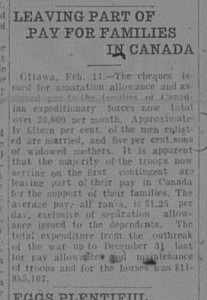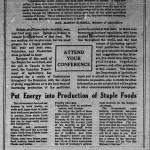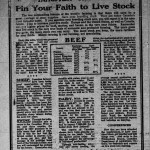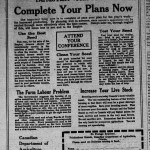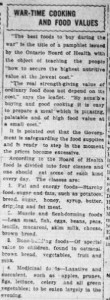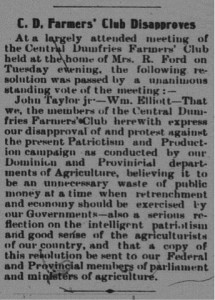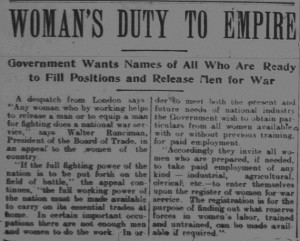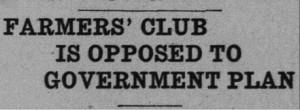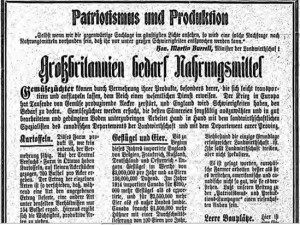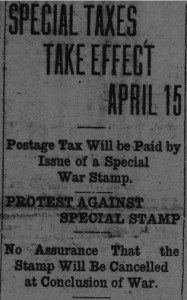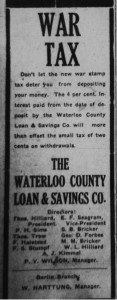Waterloo Region businesses were alert to the opportunities for trade offered by wartime demand for goods by governments and the markets left underserved by the disruption in European trade. The Waterloo Chronicle-Telegraph reported on January 21st that a number of local manufacturers attended a meeting at Waterloo City Hall at the behest of the local Board of Trade. The meeting was called after a positive response by representatives of the Canadian Pacific Railway, who agreed to provide increased distribution of goods from the county in order to help manufacturers “for both ‘patriotic and selfish reasons.’”
The meeting itself was attended by over a hundred representatives of the region’s manufacturers. Of particular interest was the gap left by the end of German and Austrian exports to hostile countries, but also in the continued securing of government contracts. The businessmen agreed that united action was the best course for securing new foreign and government contracts, and appointed two delegates to form a central committee to “secure information from the Dominion Government, the Canadian Manufacturers’ Association, and foreign governments on articles most needed, and how Waterloo County manufacturers could supply the needs.”
(“Waterloo County Manufacturers Alert for Increased Export Trade,” Waterloo Chronicle-Telegraph, 28 January 1915)

